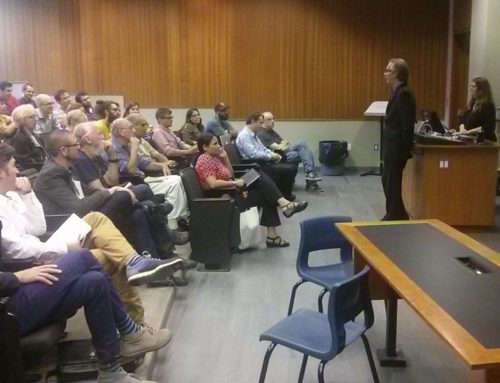Forrest DeGroff (City College of San Francisco )
Title: A Proposed Alternative Measure for Climate Change
Potential Carbon dioxide equivalents is the benchmark standard for expressing climate change potential, expressed as CO2e. “The international standard practice is to express greenhouse gases in carbon dioxide (CO2) equivalents. Emissions of gases other than CO2 are translated into CO2 equivalents using global warming potentials.”i The CO2e standard is a proxy measure of climate change and by extension, of ecosystem services. The use of this standard in one form or another as the basis for determining carbon fees, is limited by the one-dimensional, single-point nature of such a measure. The CO2e standard makes no accommodation for the origin or source of the carbon source, and thus cannot account for either spatial or temporal shifts in carbon emissions. Our understanding for the CO2e standard is that the underlying, simplifying assumption is that the source of carbon is fossil fuels. Such an assumption may be a reasonable approximation in a world where spatial or temporal shifts in carbon emissions (often referred to as ‘leakage’) are negligible, but such is not the case. Spatial shifts in carbon emissions to areas with no or lower carbon fees are already a significant portion of worldwide global emissions, and we expect that temporal shifts in carbon emissions such as the conversion of carbon dioxide to biomass will emerge and expand when and where carbon fees provide the incentive to do so. To properly account for spatial or temporal shifts in carbon emissions, we are proposing a vector scale or metric as a proxy of climate change, one that instead measures the change in residence time as carbon is moved or shifted between carbon reservoirs due to anthropogenic activity. To best approximate the climate change effect, we propose that such a shift be measured using a logarithm scale, and the unit name be carbon quality, abbreviated as ‘cq’. The general from of the equation is: cq(carbon) = ƒ ( log10 [mean carbon residence time] (carbon)) The carbon quality vector will measure the climate change when carbon, from any organic carbon from any carbon source, is converted to CO2, or is converted to any lower energy organic carbon, in any carbon reservoir. This measure eliminates the incentive for carbon consumers to avoid carbon fees through temporal shifts in carbon emissions, and can be used to measure cross-border movement of embodied carbon, thus eliminating the incentive for carbon consumers to avoid carbon fees through spatial shifts in carbon emissions. We view our proposed carbon metric to be the first element in what will become a multidimensional carbon metric, to account for the myriad of factors that affect climate change






